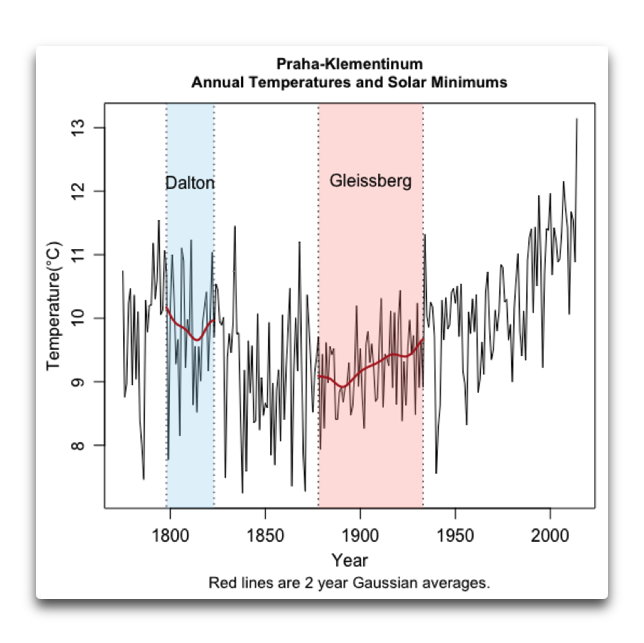Good thing we live above 45° North! Of course, the 2500 ft elevation doesn’t help.

Daily observations of the number of sunspots since 1 January 1900 according to Solar Influences Data Analysis Center (SIDC). The thin blue line indicates the daily sunspot number, while the dark blue line indicates the running annual average. The recent low sunspot activity is clearly reflected in the recent low values for the total solar irradiance. Data source: WDC-SILSO, Royal Observatory of Belgium, Brussels. Last day shown: 28 February 2018. Last diagram update: 1 March 2018. (Credit climate4you.com)
The Full article is HERE.
And here’s a graph that shows annual earth temperatures vs. solar minimums. We’re in for a ride!
